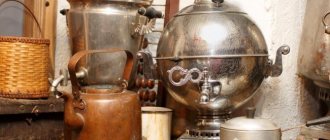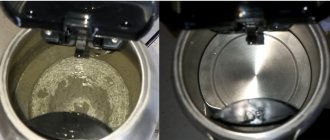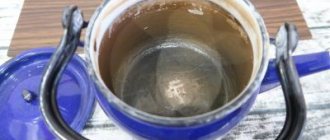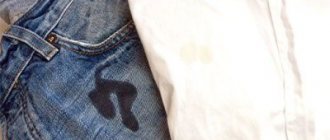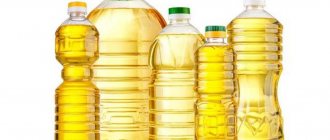Many people have things made of brass in their homes. These could be kitchen utensils, dishes, antique jewelry or icons. All these products require periodic cleaning. To clean brass at home and not damage the metal, you need to clean it according to all the rules. Valuable antique items that have served for decades require especially careful handling.
Brass and its applications
Brass is a metal alloy whose main components are zinc and copper. Tin, lead, nickel, manganese, and other metals are used as additional additives. According to the standard formula, the ratio of zinc to copper is 2:1, but in recent years the volume fraction of zinc has been reduced to 30%. The characteristics of the alloy depend on the ratio of metals. Therefore, if the product has a technical purpose, the zinc content in it is increased. At the same time, the price is significantly reduced.
Brass is one of the most common alloys; it has great wear resistance, but often oxidizes. An alloy with a zinc content of 20% is often used for the manufacture of car parts and heating appliances. If the zinc content is 40%, then fittings or stamped products are made from the alloy. Alloys with complex compositions are used in various fields: in shipbuilding, for the production of watches, aircraft, and more.
This alloy is often used to make artistic accessories and jewelry, as some of its types are very similar to gold. Due to its low magnetization ability, brass is used to make compasses. High thermal conductivity makes this metal an excellent raw material for the production of teapots and samovars.
How to care for brass products
There are a number of basic rules, adherence to which makes it possible to keep brass items in marketable condition, which allows you to avoid plaque and contamination:
- If you constantly use a brass item, you should keep it constantly clean: systematically wash it with water and wipe it with a damp cloth.
- After washing a brass item, to avoid the appearance of cloudy stains, you need to wipe it with a dry natural cloth.
- You should not handle brass metal with unwashed and greasy hands, as fingerprints will immediately remain on it, which will become more difficult to remove each time, which will lead to loss of appearance.
- Brass jewelry should be kept in a box and periodically wiped with a natural cloth. It is best to use a special cloth for rubbing silver jewelry for this purpose.
- When caring for brass, you should not use products that can damage the product (abrasive mixtures, any type of cleaning products with ammonia, etc.).
If you use brass material correctly and take care of it, then you will maintain its presentation for a long time. But when there are serious contaminants and oxides on a brass item, then it is worth knowing how to clean a brass item at home.
Effective cleaning methods
Before cleaning a brass item, it is carefully inspected. Such things can be all-metal or varnished. This determines which cleaning method can be used without damaging the product.
Important!
If the item is antique or has great historical value, it is not recommended to clean it at all. This procedure removes the patina, which gives the product special beauty and value.
Rules for caring for brass items:
- Brass items coated with varnish cannot be treated with aggressive substances. To clean them, use a soap solution and soft rags.
- If the item is heavily soiled or covered with oxides, it is cleaned with soft compounds without large abrasive components. In this case, the effect of the substance is first assessed on an inconspicuous area of the object. Soft brushes are used for cleaning.
- Compositions containing acids clean brass surfaces very quickly and efficiently. But using them as cleaning agents is dangerous. If used incorrectly, there is a high probability of damaging the metal.
- Brass utensils cannot be washed in the dishwasher. It will become dull and lose its attractive appearance.
Before using special cleaning products, brass products are washed in a warm soapy solution. it is prepared by adding dishwashing detergent to water or dissolving laundry soap shavings. Leave the items in the prepared solution for half an hour, then wash off the dirt with a soft cloth. Then the items are wiped dry. As a result of such washing, the product is cleaned of dark deposits and dirt.
Oxalic acid
In concentrated form, this substance is used very rarely. Oxalic acid is usually included in the list of ingredients in plumbing and tile cleaners. Such products are applied in liquid form to the item to be cleaned and wait for it to darken. Then the product is treated with a brush and sprinkled with baking soda. Then it is washed with running water and wiped.
For brass products that have not been cleaned for many years and are covered with a thick layer of oxide, using products with a low concentration of oxalic acid is ineffective. In this case, you can effectively clean brass from oxide with a concentrated solution of 10 liters of pure water and 200 g of oxalic acid. The object is placed completely in this solution and kept until the surface darkens. Then remove and wash under the tap.
Important!
Oxalic acid is a caustic substance. Therefore, when working with it, rubber gloves are put on your hands, and the respiratory system is protected with a respirator.
Acetone
This product has excellent solvent properties and is used to clean oxides from brass items. To do this, moisten a rag in acetone and wipe the outer surface of the product until the dark coating is completely removed. If the dirt does not come off well, the item is soaked in a boiling water solution of vinegar and salt. After boiling, place the product into the liquid and cook for 3 hours. When the plaque softens, remove it with a rag soaked in acetone.
Acetone is not suitable for cleaning lacquered brass items. This product corrodes the varnish layer and then has to be restored.
Toothpaste
In this way, dirt is removed from hard-to-reach areas of the object. After preliminary washing in a soapy solution, apply a small amount of toothpaste to the product and clean the object with a napkin or soft brush.
Citric acid and vinegar
To wash off old stains on the surface of a brass item, make a thick mixture of 1 tbsp. flour, 1 tbsp. l. vinegar and a small amount of water. Cover the surface of the object with this mass and wait for it to dry. Then the coating is removed and polished.
You can clean brass with vinegar alone. To do this, the liquid is heated and applied using a rag to the item to be cleaned. If the product is heavily contaminated, the area is treated several times.
Citric acid is also used as an anti-oxidation and anti-stain agent. To do this, squeeze the juice from 1 lemon and mix it with salt until a paste forms. It is applied to the surface of the object and wiped. Then the item is washed and wiped dry. Lemon must be used carefully, as it can damage the metal alloy.
Cleaning with sandpaper
This method is used to clean kitchen utensils if they are heavily smoked. Use fine-grained sandpaper to clean dishes with light pressure so as not to damage the metal. Remaining contaminants in hard-to-reach places are removed using chemical methods.
Sandpaper is not used for cleaning jewelry and decorative items. It can scratch the surface very easily. As a result, the decorative value of the item will be lost.
Cleaning with table salt
You can polish brass to a shine at home using regular table salt. It is mixed with a small amount of lemon juice and the surface of the products is cleaned. Another way to use salt is to mix 500 ml buttermilk with 1 tbsp. l. table salt. These products remove stubborn stains from brass items and make the surface shiny.
You can mix fine salt with light cream to form a thick paste. It is applied to the product and wiped. If the stains are persistent, leave the product on this area for 30 minutes. Then rinse the item under the tap with water.
Important!
When using cleaners with salt, you should wait until the crystals are completely dissolved before using the cleaner.
Professional cleaning products
For severe contamination and extensive oxides, acid compositions “Metalin” or “Delu” are used. They protect against the formation of oxides for a long time and keep the surface shiny for a long time. They can be found at various hardware stores. These substances are very aggressive, so they are used exactly according to the instructions. Having finished cleaning, the item is thoroughly washed to remove any remaining cleaner.
Important!
When working with acidic preparations, be sure to wear a respirator and rubber gloves.
Also, to remove stubborn stains and thick plaque, use the Trilon-B product. It is diluted with water in a ratio of 1:10 and items for cleaning are dipped into the resulting solution. The length of time the product is left in the liquid depends on how dirty it is. After the final removal of plaque, the item is washed with running water.
Preparing the product for cleaning
First, make sure your item is made entirely of brass. This can be done using a magnet; brass will not react with it and be attracted to it. Otherwise, the product is only coated on the outside with an alloy, and there may be ordinary metal inside. Another option is a varnished surface.
Before getting started, estimate the cost and approximate age of the exhibit. It is better not to clean antique items in order to preserve the patina, which has accumulated over decades and now perfectly protects it from external factors. An exception may be the case when the patina layer is so rough that the product loses its attractive appearance and is difficult to recognize.
Before cleaning brass, it must be washed from external dirt. This is done to increase the contact area and have the same effect on the entire surface. You can use water and soap or detergent. Immerse the desired item there for 10-20 minutes. Now clean with a toothbrush. If there was no oxide, then you can clean brass until it shines in the simplest cases.
Light soil removal products
If there are no persistent stains on the surface of brass items, but only slight darkening and dullness, you can use less aggressive cleaning agents. For example, to remove plaque, ketchup is used:
- First, wash the product in soapy water.
- Then rub the surface with ketchup with a sponge and leave for 20 minutes.
- Then remove the soaked dirt with a sponge and rinse the item with warm water.
Another mild brass cleaner is yogurt. It is poured into a pan and objects made of brass alloy are lowered into the liquid. After keeping them in the dairy product for an hour, the products are removed, washed with running water and dried with a towel.
You can clean brass thoroughly with baking soda and lime:
- Mix sodium bicarbonate half and half with water.
- Apply the paste to the surface of the object.
- Leave for 20 minutes.
- Cut a lime and rub a piece over the surface of the product.
- Leave for 40 minutes, then wash everything with water.
If the first attempt fails to achieve perfect cleanliness, the process is repeated again.
Cleaning brass plated items
If the object is not attracted to the magnet, or you have determined by another method that only the surface is covered with brass, most of the above methods will not work. Cleaning brass in this case will be more difficult. If you are extremely careful, the most delicate methods can be used.
To remove plaque, dissolve soap or detergent in lukewarm water. Now just wet the item in it and gently clean it with a soft cloth or napkin. Take your time and do everything with feeling. If a product coated with brass or varnish is damaged, it will be problematic to restore it. If there are places where the napkin cannot reach, use a children's toothbrush (it is softer). Rinse with water and wipe dry.
How to remove varnish
Some brass items have a lacquer coating. It protects the product from the formation of oxides and provides it with shine. In places where the varnish layer is damaged, gradual oxidation of the metal occurs. Therefore, the item needs to be cleaned of varnish and the protective layer reapplied. It is convenient to do this under running hot water. This is the safest method of removing coating. Boiling in water for three minutes can also help remove old nail polish.
If hot water does not help, you can remove the old layer with nail polish remover. It is applied to the surface of the product using a brush. When the varnish is removed, the surface of the object is polished with a special paste. After this, you can apply a new coat of varnish.
Safe but effective folk approaches
At all times, people knew how to clean brass and successfully coped with this task. Although there was not so much chemistry back then, so the products that were available at home were used. We have listed the most effective of them below. All methods are suitable for solving the question: how to clean brass sleeves.
- One of the most affordable methods for cleaning brass is using toothpaste. To do this, wash the product to remove dirt and dust. Now, using a toothbrush, apply the paste to the surface. If the condition is not very bad or the coin is very old, then it is better to use a soft cloth or unnecessary newspaper. At the end, don't forget to wash in water and dry.
- You will need to make something similar to dough. To do this, take water, table vinegar and flour, mix in a concentration of 1:1:1. Mix well until a homogeneous mass is formed, apply a rough layer to the brass and wait until everything dries. After this, we clean everything from the coin and wipe it well with a napkin. We repeat the procedure until the result suits you.
- A similar method has already been mentioned above. Pour hot water into the dishes. Grate the household soap and add. Mix well until foam forms. Immerse the item and leave until the water cools. Now they wash it right there with a toothbrush until it shines. Usually, in difficult cases, only the top layer will be washed off, so a soap solution is not always effective for complete cleaning.
- For not very valuable things that are in serious condition, you can use soft sandpaper. To do this, simply clean the surface with it. The main thing is not to overdo it, as you can scratch it.
- In some cases, buttermilk with salt will help. For a liter of buttermilk, add two tablespoons of fine salt and mix well. The mixture can be used to clean brass, the main thing is not to overdo it so as not to leave scratches.
Precautionary measures
When cleaning brass items yourself using traditional methods or using special means, it is important to follow some rules:
- You need to clean brass at home on the surface of the slot, covered with oilcloth or waterproof film.
- During work, wear a protective suit, rubber gloves and a respirator. At the same time, gloves are needed not only to protect the skin of the hands. They protect the surface of soft metal from scratches.
- Means for cleaning brass items are selected taking into account the composition of the alloy.
It is not recommended to clean old antique items yourself. Restoration of such products is carried out by professionals. Improper use of cleaning products leads to damage to items.
Chemical and electrochemical polishing
Chemical and electrochemical polishing are fundamentally different from mechanical polishing. Parts treated with these polishing methods also acquire a shiny, attractive and smooth surface. Chemical and electrochemical polishing is carried out with solutions containing active additives.
Chemical polishing
Chemical polishing involves immersing the workpiece for some time in a vessel with a chemically active solution, where, as a result of the resulting chemical and local electrochemical processes, the metal dissolves.
Surface roughness is reduced or completely eliminated, and the treated surface becomes shiny.
Prevention
To keep things made of brass in perfect condition, it is enough to properly care for them and regularly clean them from dirt. When cleaning brass products, dust is removed, preventing it from accumulating in hard-to-reach places. A soft cloth is used to polish the surface of objects. This is necessary to maintain shine.
Things made of brass darken when exposed to sunlight. Therefore, they need to be stored in closed cabinets and drawers. Humidity is also harmful to this alloy, so the room where brass utensils, dishes or chandeliers are located must be periodically dried and ventilated. Cases lined with soft fabric on the inside are used to store jewelry.
Special means
In addition to traditional methods, you can use chemicals specially designed and intended for cleaning brass products. Among the many products available on the market, it is worth highlighting two of the most popular:
Case
It is acidic in nature and quite well removes stubborn stains and traces of oxide on the outside of brass products. This product is actively used to remove traces of oxides when processing and restoring ancient coins. It must be used carefully so as not to damage the embossing.
Metalin
This is a chemical product for removing both old contaminants such as corrosion stains, mineral deposits, and simple fingerprints when using an item.
When using these substances, you should adhere to the following operating rules:
- these solutions should be diluted with water at room temperature in a concentration of up to 20%;
- when using, you should use a foam sponge or cloth, immersing it in the solution and soaking it for about 1-2 minutes;
- before starting work, check the brass object for the effect of the substance, preferably on an inconspicuous part of it;
- After carrying out work, thoroughly rinse the item and dry it.
How to clean a brass samovar
Brass is the most popular material in the manufacture of samovars. Thanks to this alloy, the product acquires strength, a beautiful appearance and does not require a lot of labor during maintenance. Using a samovar for a long time causes its presentation to deteriorate and become dull. Using household chemicals available in retail outlets can damage the product. Therefore, the question arises, how to clean a brass samovar? To do this, we should offer you 3 effective ways to clean this popular item among art lovers:
- A mixture of ammonia and water in a 1:1 ratio.
- Homemade yogurt without impurities, which needs to be applied to the object and wait until it dries.
- A samovar soaked in vinegar should be sprinkled with salt and the object should be rubbed with a cloth soaked in vinegar.
After all of the above processing options, the item must be polished with a dry cloth and stored in dry rooms, since high humidity leads to stains.
Attention! When cleaning a samovar, it is prohibited to use abrasive substances, since if used, it can cause irreparable harm to the item.
For information
At all times, this metal was considered a valuable alloy due to its wear-resistant qualities. It was known even before our era. The ancient people obtained brass by alloying zinc ore and copper.
The base is copper and the alloying component is zinc. Sometimes other components may be included in the alloy, for example, lead, nickel or iron. However, the third component should be significantly less than zinc. Otherwise, a bronze alloy will come out. By the way, brass has external similarities with it.
Alloy technical characteristics:
- High level of resistance to corrosion coatings.
- Fluidity when it melts.
- Good indicator of wear resistance and friction.
- No magnetic influence. Real brass is not attracted to a magnet.
There are foundry brass and jewelry alloys. They are distinguished by special markings and colors.
There are foundry brass and jewelry alloys. They are distinguished by special markings and colors
Casting brass is used for the production of various reinforced parts, massive worm screws, live screw nuts, bearings, bushings, automotive parts and special-purpose parts that operate at temperatures up to 300°C.
Various jewelry, medals and other things are made from jewelry alloys.
Brass items can be cleaned using the same methods as bronze items. It is recommended to know exactly the constituent components of the metal, which will allow you to achieve the most effective result. The alloy can be of different colors and shades, depending on the percentage of zinc in the alloy.
Manufacturers also often coat brass with precious metals, such as gold or silver. This spraying gives the alloy a protective barrier from the negative effects of moisture and air. If pure brass comes into contact with the environment, it can become stained with oxide and lose its original shine.
To independently clean this metal from oxides, you need to create the necessary conditions and use suitable methods and means.
How to clean severe darkening?
Severe darkening can be cleaned using a variety of materials. The combination of lemon juice and a pinch of boiled salt is highly effective. Among the features of this method, we note the following points:
- Before cleaning, the surface is washed with clean water and then wiped with a dry cloth.
- If the surface layer is varnish, you will have to remove it. This is due to the fact that during long-term use of brass, plaque can form under the varnish.
- After preparing the product, you can begin cleaning. Lemon juice is mixed with table salt, thereby increasing the effectiveness of the resulting mixture.
Polished brass
A surface can only be cleaned until it shines using a combination of several methods. An example is that after applying the mixture, the surface is cleaned and treated with soft sandpaper. It is not recommended to use an abrasive that is too coarse, as this leads to deep scratches.
How to protect brass
When carrying out work on cleaning brass, you should pay attention to the following tips to protect the alloy from foreign influences:
- the treatment area should be protected with a film with a waterproof effect;
- When performing work, you should use special clothing and gloves;
- carefully study the quality and negative consequences of using the cleaning product so as not to damage the item;
- It is worth studying the presence of substances in the alloy from which the item is made. If impurities are present, it is worth reviewing the cleaning procedure.
Attention! It is better to entrust the cleaning of antique items to a professional, since cleaning yourself can cause irreparable damage to the item.
Alloy care methods
Before you begin cleaning your brass, you must do the following:
- If parts or objects are coated with paints and varnishes, they must not be processed using aggressive agents. It is recommended to wipe with a cloth previously soaked in soapy water.
- Oxidized areas and highly complex contaminants are removed using products that do not contain abrasive particles. Before processing, it is necessary to check the edges of brass parts; brushes with soft bristles are used.
- Acetic, citric and hydrochloric acids quickly remove dirt and deposits on alloy objects. However, it is recommended to take precautions, sometimes substances can cause harm to brass products.
- Do not wash dishes made of this metal; as a result, they will lose their initial shine.
Cleaning and polishing brass
